What is a cardiac arrest ?
A cardiac arrest is terminology applied to the heart. Basically the heart stops pumping in clarification. This has an impact on supply of blood to the brain and other organs. As oxygen is deprived in time tissue necrosis (death) occurs instantaneously. Brain and also heart tissue is unlike skin tissue, emphasis the tissue does not recover. Speed is of the essence. Cardiac arrests can affect adults and children alike. There are many causes of cardiac arrests. Instances including heart attacks or angina are common in adults, whilst in children conditions like asthma and meningitis can lead to cardiac arrests. Not every cardiac arrest is the same however. Depending on the cause a variety of signs and symptoms can present, or possibly not.
Other factors in a cardiac arrest
There are many factors to be considered in survivability in cardiac arrests. Whilst not exhaustive it can include things like the age of patient, the cause of the cardiac arrest, how early CPR and defibrillation was initiated. Other factors include underlying health conditions of the patient and medications the person is taking. This can include prescription or non-prescription drugs. Altogether there are multiple factors.
Chain of Survival – Cardiac Arrests
Chain of survival – Cardiac Arrests
The Northern Ireland Ambulance Service (NIAS) discuss four steps to maximise the chance of survival in patients who suffer cardiac arrests.
- Step 1. Early recognition of cardiac arrest and call for professional help.
- Step 2. Early CPR must be initiated.
- Step 3. Early access to defibrillation is critical likewise and is combined with CPR.
- Step 4. Early post resuscitation care to restore the quality of life however also apply.
Step 1 – Recognition of cardiac arrests and call for help
In the primary survey step one of the conformation aspects for cardiac arrest is to conduct a breathing check markedly. This is observed over a 10 second period because it confirms cardiac arrest.. Known as the look, listen and feel technique. The patient’s airway must be opened. To do this place the heel of your hand on the forehead. Use your other hand & fingers are placed under the chin. Gently push down on the forehead and lift the chin. This will open the patient’s airway. Tilting your head to the side you observe the rise and fall of the chest (look), meanwhile place your ear down towards the patient’s mouth (listen). The flow of air will strike your cheek (feel). If breathing is absent or irregular by persistent wheezing, cardiac arrest has begun and Cardio Pulmonary Resuscitation (CPR) commences.
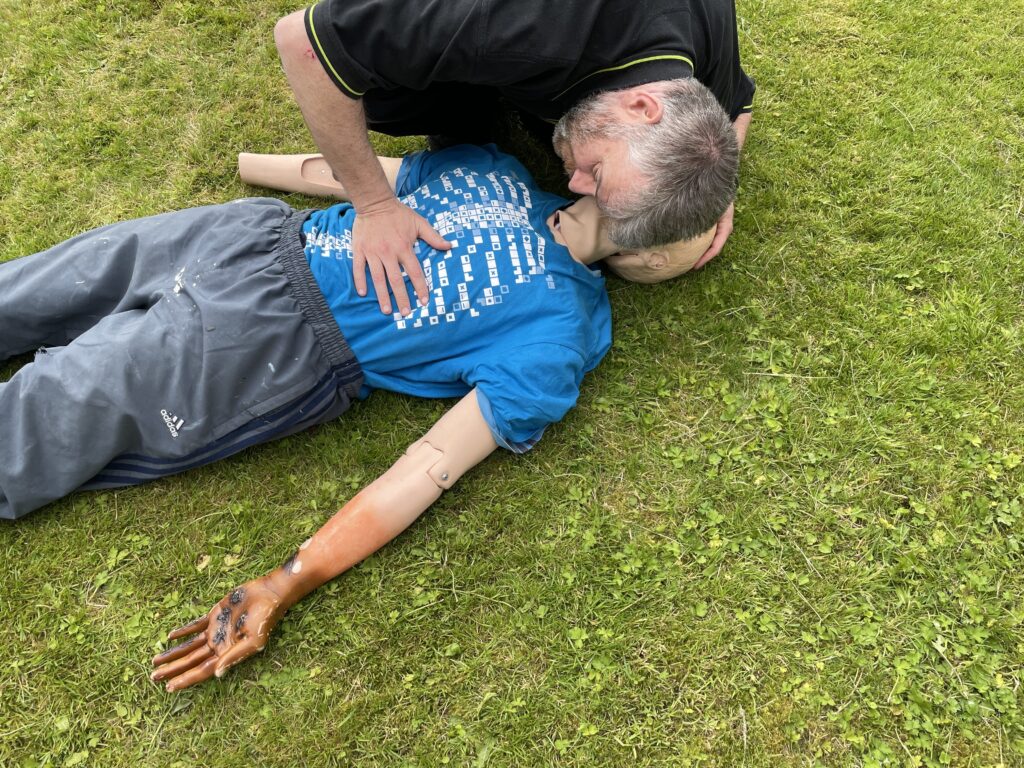
To find out more about this process follow Step 1. Early recognition of cardiac arrest and call for professional help
Step 2 – CPR in cardiac arrests
The process of CPR is a combination of 2 techniques combined. Cardiac compressions (Cardio) and rescue breaths (Pulmonary). The two combined practices are referred to as resuscitation. Obviously techniques will depend on the age of the patient and in some cases the suspected cause.
In adults (non-drowning incident) we commence with 30 chest compressions. So imagine squeezing the heart like a sponge, this pushes blood in-between the chambers and out to the lungs and body simultaneously. Upon releasing the compression, it relaxes the sponge soaking more blood in. Once completed 2 rescue breaths are delivered to oxygenate the blood. Pinch the patient’s nose. Tilt the head backwards. Lift the chin. This cycle continues. In a drowning incident however, the procedure changes slightly. 5 rescue breaths initiate the process. This is then followed by 30 chest compressions then 2 breaths (30:2 cycle).
In Paediatric CPR the process is the same as an adult drowning incident. 5 rescue breaths initiate the process. 30 chest compressions and 2 rescue breaths are then delivered. Lungs are smaller, so less air is passed. Paediatrics are aged anything between 1 – 18 years of age. In the chest compression phase, only one hand is placed on the chest. If this is not effective use both hands.
Infant CPR requires a similar approach. Sealing both lips and nose during rescue breathing. After 5 rescue breaths have been administered compress the chest with 2 fingers. The 30 chest compressions and 2 rescue breaths follow accordingly.
Manual CPR will account for about a 10% chance of survivability in out of hospital cardiac arrests.
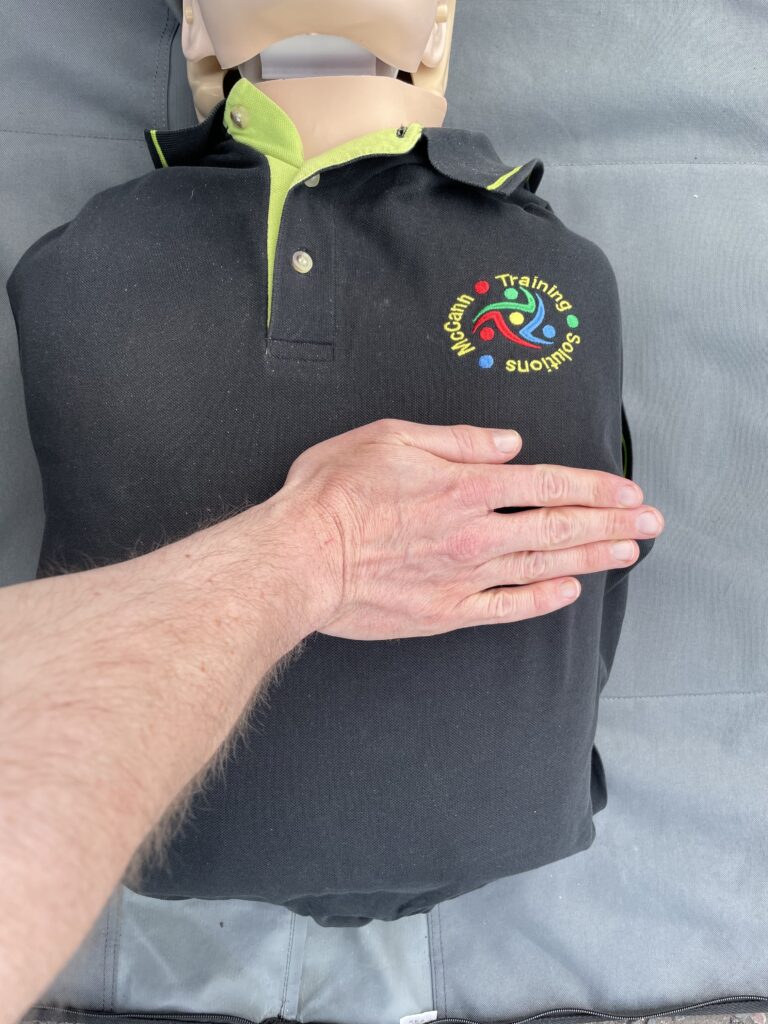
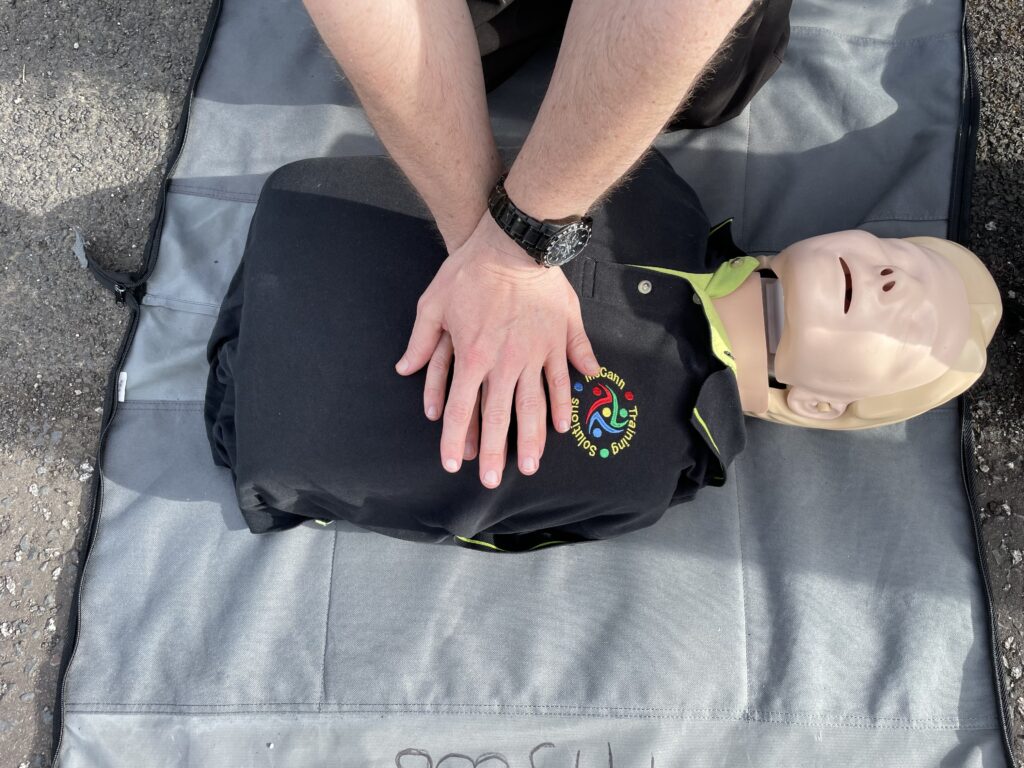
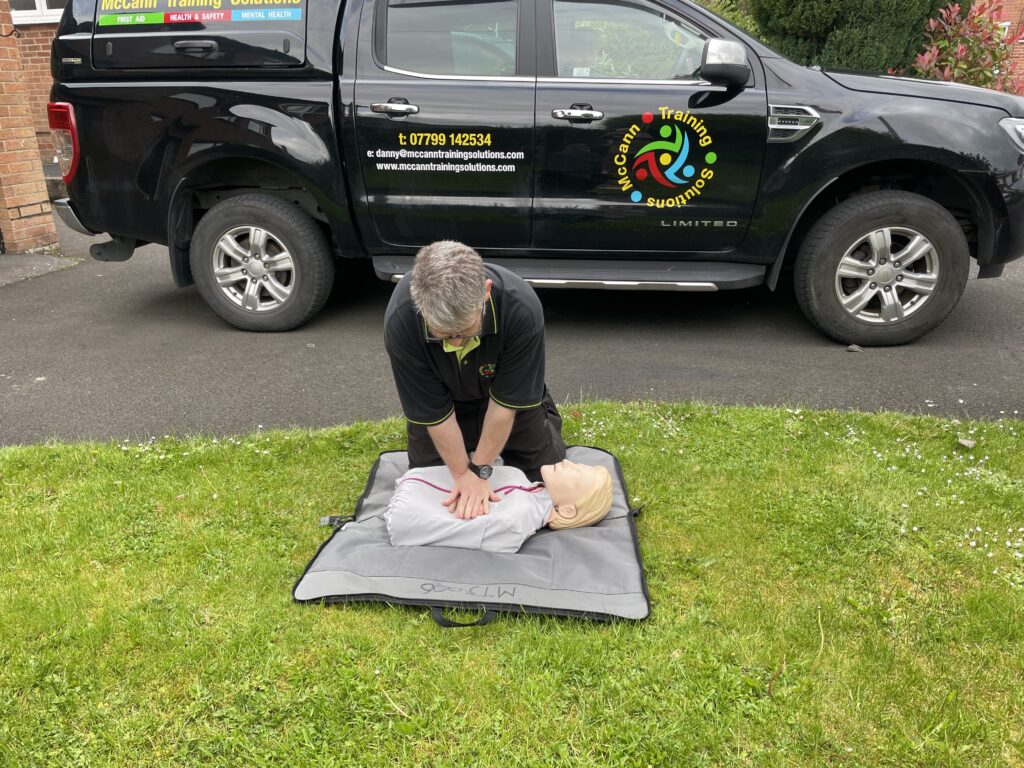
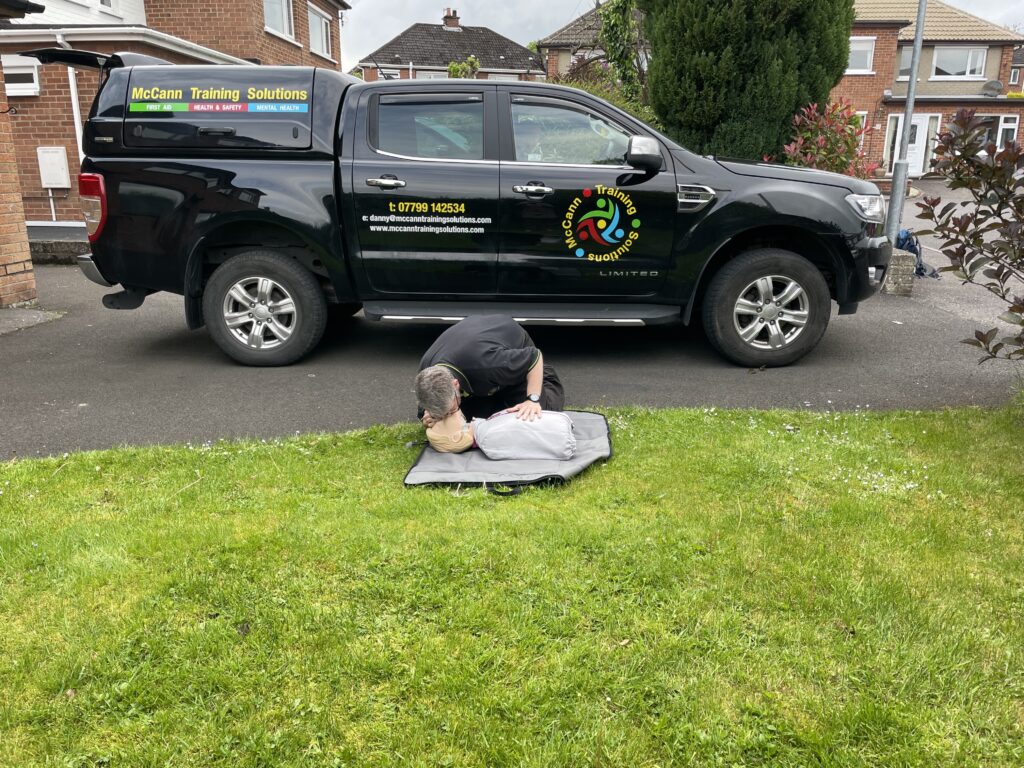
To find out more about this process follow Step 2. Early CPR must be initiated
Step 3 – Defibrillation
Defibrillators are common practice in public cardiac arrests in today’s society. Located in a variety of locations including supermarkets, shops and petrol stations etc. Defibrillators can raise survivability chances altogether to around 38%. In combination with CPR defibrillators can certainly make a difference. Evidently, whilst the law specifies you do not need training at McCann Training Solutions we would recommend this.
To find out more about this process follow Step 3. Early access to defibrillation is critical likewise and is combined with CPR
Step 4 – Post Resuscitation Care
There are initial steps to consider in post resuscitation care. Lastly diagnostic equipment is a factor. Post resuscitation care is conducted by professionals and diagnostic equipment. A key element is to maintain oxygen saturation in the body between 94-98%. This allows for body tissue to maintain its integrity. A small probe is placed on the patient’s finger moreover monitoring the oxygen saturation. Additionally body temperature is another factor involved in oxygen saturation. Equally if the body is kept warm blood vessels dilate. Basically oxygen delivery is supported strongly here. Another part of care is ensuring blood volume is maintained and heart functionality is correct. The heart functionality is measured by a machine called an electrocardiogram (ECG). Forthwith blood pressure is monitored as well to ensure sufficient oxygen delivery is kept high.
Training
Training is an important tool for efficiency firstly. McCann Training Solutions utilises up to date equipment. Here we can provide accurate instructional delivery, meanwhile providing instant feedback for you the delegate. Practical skills require repetition to be effective. Building muscle memory aids in performance. The training is designed around the individual. This allows for identification of incorrect techniques notwithstanding and correction. Life like equipment is used to simulate real situations in training. Nonetheless this provides visual & audible resources enhancing your training experience with us.
“You can’t change what happens, you can change what you do about it”
Danny mccann – mccann training solutions